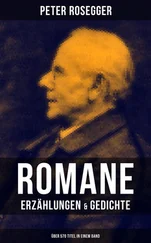He guessed the dogs had been drawn to the creek by the smell of dead cattle.
Picking up a few slivers of dried grass, Atkins released them in the wind. The grass blew back toward his face. Good. He was downwind.
He wanted to take out the mixed-breed, the apparent pack leader, but Elizabeth stood directly in his line of fire. She took a slow step backward. The dog moved in closer. It was growling, head low to the ground, hackles up.
Three more dogs leaped over the edge of the bank and joined the two circling behind Elizabeth.
Do it now, Atkins told himself.
He’d been too slow with Sara. The memory flashed before him. If he’d reacted more quickly, maybe he could have reached her before the fire swept through that building in Mexico City. The self-doubts had haunted him for years.
He stepped into the open. Aiming quickly, his first blast took out two dogs, who disappeared in red puffs as the buckshot blew them to pieces.
“Lie down!” he shouted to Elizabeth, who threw herself onto the gravel.
Running, stumbling on the uneven ground, Atkins got closer and fired from the waist. Two booming shots. The pack leader rolled over, part of its head missing. Another animal took a load of steel shot in the side and was thrown up the creek bed.
The other animals scattered. Atkins tried to count them as they disappeared into the brush. At least a dozen. And he doubted he’d seen all of them.
Elizabeth got up and ran to him. “I don’t know where they came from,” she said. “I looked up and they were all around me.”
They jogged back down the creek toward the Explorer. Atkins looked behind just as five dogs came out of the brush.
Incredible, he thought. They’re following us.
The pack was led by a mastiff with a broad, white head. Flecks of foam flew from its mouth. Barking once, it charged them.
Atkins swung the shotgun around and fired twice. The impact stopped the animal in mid-stride and killed another as it tried to scramble up the bank.
Atkins widened the weapon’s choke to give him a broader shot pattern. He had two more shells left and wanted to make them count.
They climbed into the Explorer and locked the doors.
“You okay?” he asked.
Elizabeth sat there, trying to catch her breath. Her face was flushed. “I’m fine,” she said. “Now I know why I’ve always been a cat person.”
As they watched from the front seat, several dogs emerged from the woods and began fighting over the carcasses of the dead animals. Small dogs that looked like terriers, the viciousness of their attack was all the more striking.
“From here on, I’ll take the seismic readings myself,” Atkins said. “I don’t want you going down there again. I don’t think those dogs have gone.”
He wondered if the animals could sense something.
So did Elizabeth. “Do you think maybe they know something we don’t?” she asked.
MEMPHIS
JANUARY 13
3:00 P.M.
WALT JACOBS HAD INSTINCTIVELY DROPPED UNDER his desk when he felt the first tremor. A strong aftershock sent part of the cornice and front wall crashing into his office. The shattered bricks narrowly missed him, pulverizing a wooden table where he’d stacked books and papers.
The converted house, one of two occupied by the university’s Center for Earthquake Studies and the USGS, showed signs of imminent collapse. Cracks, some wide, had appeared in most of the load-bearing walls.
Jacobs had seen enough.
“Everybody out of here!” he shouted. “We’re moving into the annex. Now!”
Located behind the other offices, the single-story, wood-frame building was shaped like a military barracks and contained the earthquake center’s library, a few classrooms, storage areas, and a workshop. Jacobs and the other seismologists had slept there the night before. The center had a supply of camping gear for field trips—sleeping bags, inflatable mattresses, butane stoves, water purification kits, and other equipment that would prove extremely handy in the days and weeks to come.
The annex, which also housed a set of four seismographs, had been nudged three inches off its foundation, but had held up fairly well. It took several hours to move the computers and the most critical files and databases from the other two buildings.
Jacobs and six other staff members had made it to the center. So had four of the USGS geologists who’d flown into Memphis after the first quake. Several graduate students had also shown up.
Earlier that morning, Jacobs had privately asked two of the students to try to reach his house in East Memphis to check on his wife and daughter. He hadn’t been able to get in touch with them and was starting to worry. He wanted to go himself, but knew his overriding responsibility during the crisis was to keep the earthquake center up and running.
The students, both Ph.D. candidates, a young man and woman, readily agreed. It wasn’t going to be easy. Jacobs lived more than ten miles away, in the Germantown area. They’d have to walk.
Jacobs thought of his wife, Susan, and daughter, Lisa. His memory focused on a day before the earthquakes, their last real morning together as a family. They’d had breakfast at the kitchen table, in front of the bay window that Susan loved, the detail that had brought them to buy the house five years earlier. Susan had reminded him to stop at the supermarket on his way home and pick up some milk. He remembered how good she looked, with her long black hair tied back. He should have complimented her, told her how much he loved her. He regretted bitterly that he hadn’t done that. He whispered another silent prayer that they were safe.
Later that morning, he made his first extended tour of the campus. The scope of the disaster staggered him.
Most of the university’s brick buildings had been severely damaged. Some had been knocked to pieces. Walls and roofs had collapsed. The Feldman Memorial Library, a new five-story building, was a pile of bricks, glass, and books.
The worst damage was along Dormitory Row, where the student high-rises were located. Two of the four dorms had collapsed. One of them, a ten-story building, had snapped in half. The other lay on its side, virtually intact. Some of the survivors had been able to climb out of the windows and jump to the ground.
But many of the two thousand students who lived in those buildings were dead or seriously injured. Some had horrible wounds, and no one to treat them.
Students and a few campus police officers were climbing through the rubble looking for survivors. Screams seemed to come from a dozen different directions at once.
Jacobs saw a pair of bare legs sticking out from under a section of drywall. He thought he saw one of the legs move and started to pull away a covering of debris.
Stopping immediately, he opened his mouth to cry for help, but no sound came out. He fell to his knees and vomited.
Jacobs took another look at the gaping face. The girl’s hair was brown and matted.
He heard someone come up behind him. A young man.
Still on his knees, Jacob waved the youth away and tried to warn him not to come any closer. It was too late. The student already had taken a good look.
“Oh, God!” he cried, and put his hand over his mouth. He dropped next to Jacobs and retched.
Jacobs saw a man he recognized, a middle-aged doctor who lived in the neighborhood. Wearing a gold jogging suit and carrying a small black bag, he was moving around the piles of brick and glass, trying to help the injured.
Jacobs called to the man, but his voice was thick with bile. He was fighting to control his stomach.
He finally got the words out.
The doctor came over, took one look at the body, and angrily said, “Don’t waste my time with the dead!”
Читать дальше












